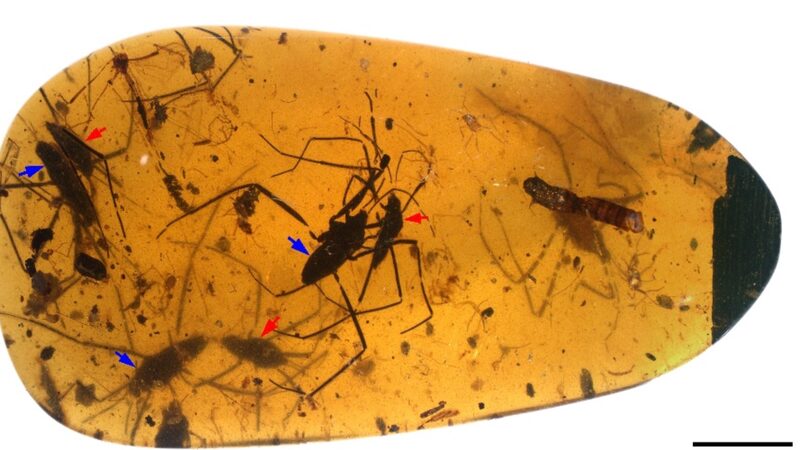Ever wondered what love looked like 100 million years ago? 🦖💕 Well, Chinese researchers have just given us a peek! They've discovered ancient water striders trapped in amber from the mid-Cretaceous era, caught in the act of mating. Talk about being photo-bombed by history!
This incredible find includes seven adult water striders—including three couples who were, let's say, getting cozy—and four young ones, all preserved in stunning detail. The amber piece, originating from northern Myanmar, effectively froze a moment in time, offering scientists a unique window into the behaviors of ancient insects.
\"Catching insects during copulation, especially aquatic species, is like finding a needle in a haystack,\" said Professor Huang Diying from the Nanjing Institute of Geology and Palaeontology of the Chinese Academy of Sciences. \"These findings are helping us deepen our understanding of how these insects interacted millions of years ago.\"
Not only were the insects preserved mid-mate, but microscopic analysis also revealed intriguing differences between the males and females. The males sported slightly curved front legs with comb-like structures—likely adaptations to get a better grip during those prehistoric romantic encounters. 🕺💃
These ancient lovebirds might have been engaged in a pre-mating struggle or post-mating cuddle (aww!). The males probably used their specialized legs to hold onto their partners, possibly to prevent other suitors from swooping in. Sounds a bit like the ultimate wingman strategy, doesn't it?
The research team believes that such discoveries are invaluable. Not only do they shed light on the evolution of insect mating behaviors and life history traits, but they also provide inspiration across fields like evolutionary biology, ecology, and even biomimetic technology. Who knew that ancient bugs could be so influential?
So next time you think about ancient history, remember: love has been in the air—or in this case, the water—for millions of years! 🌊🐞❤️
Reference(s):
Chinese researchers reveal mating dynamics of ancient insects in amber
cgtn.com



